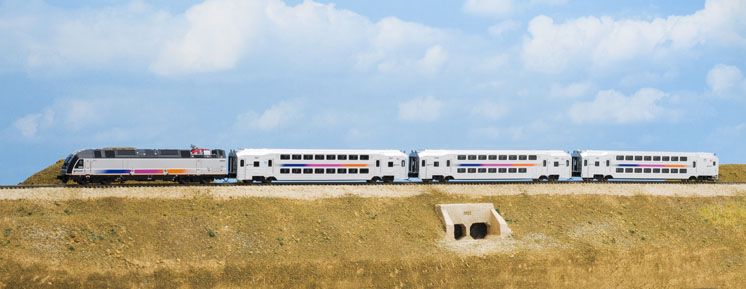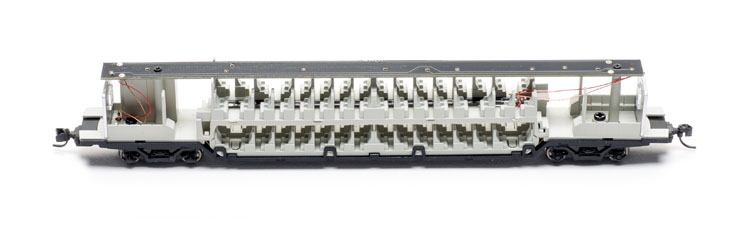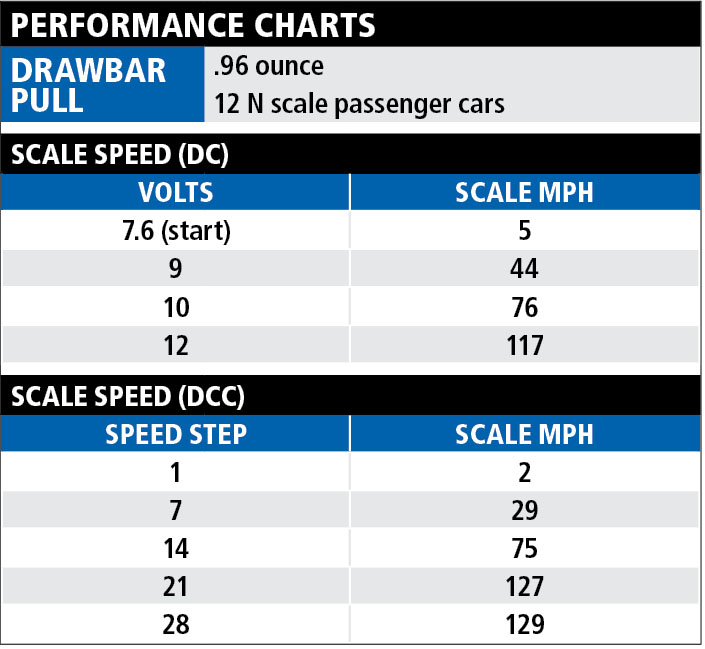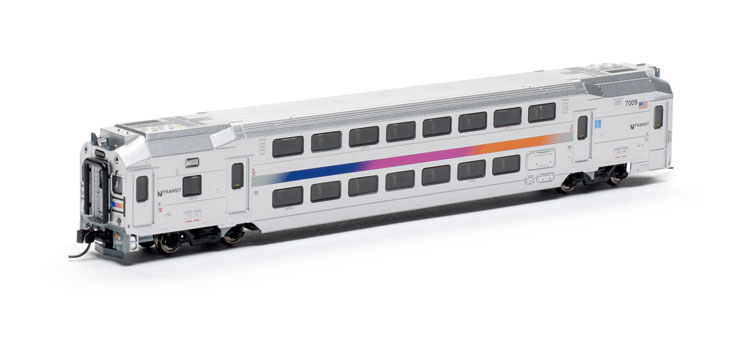N Scale fans of modern mass transit can now add NJ Transit’s (NJT) current Bombardier dual-mode locomotives and multilevel passenger cars to their layouts, thanks to Atlas. The company also accommodates modelers of the Montreal area with locomotives and rolling stock decorated for Agence Métropolitaine de Transport (AMT), now known as Exo.
NJ Transit runs trains in electrified and non-electrified zones. This meant riders crossing between zones either had to switch trains or wait for diesels to be switched to electric locomotives or vice-versa. But in 2011, Bombardier began delivery of 26 dual-power (straight electric and diesel-electric) ALP-45DP locomotives. Now it was only a two-minute wait to convert the locomotive from onboard diesel-electric power to overhead catenary, or the reverse. NJ Transit calls this a one-seat ride.
The locomotives are equipped with two Caterpillar 12-cylinder diesel engines rated at 2,100 hp each to generate power for the traction motors and provide head-end power (HEP). When collecting power from the 12,500 volt, 25 hertz and 25,000 volt, 60 hertz overhead, the locomotive generates 6,700 hp.
The models offer much of the same fine detail and decoration of Atlas’ HO scale versions reviewed in the July 2017 issue of Model Railroader.
The locomotives have black roofs and silver sides featuring NJT’s trademark blue/magenta/orange fade striping. Detail painting includes the orange handrails on the sides of the cab doors and myriad warning labels prototypically placed around the locomotive. All lettering is crisp and color separations are sharp. All of the decoration matches prototype photos available online.
A non-operating pantograph can be posed up or down. Other separately applied detail parts include the modified Nathan K5LA horn and high-voltage wiring on the roof. The knuckle couplers are body-mounted.
The silver-painted passenger cars match the standard set by the locomotive. On the cab car, end details enhanced with paint include the subway-style barriers that swing out to protect passengers from falling between the cars on station platforms. Flush-mounted, tinted window inserts include painted rubber gaskets.
The cab car’s illuminated headlights, ditch lights, and marker lights are directional in direct current (DC). In Digital Command Control (DCC), the lights are always on unless you install a decoder.
There are connections to add a decoder and speaker. Some ingenuity would be required to fit a speaker and provide sound holes for it. Electronic Solutions Ulm offers a sound file that can be downloaded to an ESU LokSound Micro Next18 sound decoder no. 58828 to provide the correct sounds.
Separately applied detail parts include tubular rubber diaphragms and modified Nathan K5LA air horns. Dimensions on all models are within scale inches of measurements shown in an online spec sheet included in a Bombardier proposal.
Atlas includes a detailed list of the programmed functions. In addition to the traditional horn and bell sounds, the operator can trigger an electric mode with function 4. All of these sounds match prototype videos.
Sound started at 7.5V with an engine start-up sequence, and the locomotive began moving at 7.6V and 5 scale mph. Top speed was 117 scale mph at 12V, our standard maximum voltage for DC testing. Sounds were automatic, and the lighting was directional.
Testing on our N scale project layouts revealed the multi-level passenger cars are particular about clearances. On both the Red Oak and Canadian Canyons layouts, bridges and tunnel portals on curves presented challenges.
Price:
Locomotive: $259.95 (DCC sound), $149.95 (DC, no sound)
Cab car: $69.95
Trailer: $54.95
Trailer with slogan: $59.95
Three-pack (includes cab car, trailer with toilet, trailer without toilet): $179.85
Three-pack (includes locomotive [DC]) trailer, and cab car): $274.85
Manufacturer
Atlas Model Railroad Co. Inc.
378 Florence Ave.
Hillside, N.J. 07205
atlasrr.com
Era: 2012 to present
Road names: NJ Transit (multiple road numbers), Agence métropolitaine de transport (AMT) (multiple road numbers), Bombardier demonstrator (one road number)
Locomotive features:
- Dual-mode ESU LokSound V.4 decoder, operates on DCC and DC layouts
- (DCC version)
- Factory-applied railings, air horn, and antenna details
- Five-pole skew-wound motor with dual brass flywheels
- Illuminated directional LED headlight/ditchlights and red marker lights
- Knuckle couplers body-mounted at correct height
- Pantograph (non-functioning) can be positioned up or down
- Weight: 3.9 ounces
Trailer features:
- Interior includes seat details and LED illumination
- Truck-mounted knuckle couplers mounted at correct height (cab end of cab car has body-mounted coupler)
- Metal wheels, in gauge
- Separately applied lift lugs, end barriers, and plastic diaphragms
- Weight: 1.2 ounces, .2 ounce less than NMRA RP-20.1
Additional cab car features:
- Directional LED headlight/ditch lights and red marker lights
- 21-pin plug for optional sound decoder, sound file available from ESU
- Weight: 1.3 ounces, .1 ounce less than NMRA RP-20.1

















